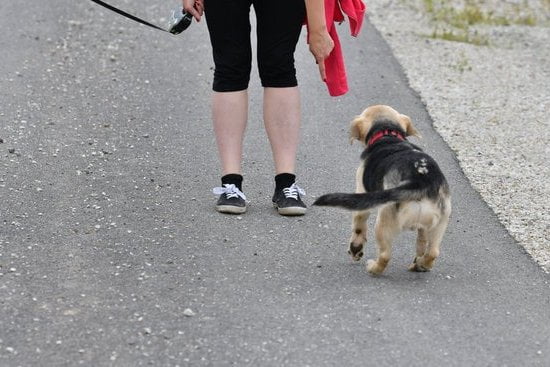?
There is no one-size-fits-all answer to this question, as the length of time you should crate train your dog will vary depending on your dog’s individual personality and behavior. However, crate training can be an extremely helpful tool for housebreaking your dog and helping to potty train them, so most experts recommend crate training your dog for at least a few weeks.
If you are crate training your dog for the first time, it is important to start out slowly. Introduce your dog to the crate gradually, and only leave them in the crate for a few minutes at a time at first. As your dog becomes more comfortable with the crate, you can gradually increase the amount of time they spend in it.
It is also important to make sure your dog has plenty of opportunities to relieve themselves outside, and to praise them when they do go potty in the appropriate spot. This will help them to associate going potty with positive things and will make potty training easier.
Dog Crates For Training
Dog crates are a great way to train your dog and can be used for a variety of purposes. Crate training is a popular way to train dogs and can be very effective. It can be used to housebreak puppies and to teach dogs to remain calm and relaxed in a variety of situations.
Dogs are den animals and prefer to have a small, enclosed space to call their own. Dog crates provide this space and can be a great way to help your dog feel secure. When you first begin crate training, it is important to make the crate feel like a positive place for your dog. Place a few toys and treats in the crate and let your dog explore it on his own.
When you are first training your dog to use the crate, it is important to keep him in the crate for short periods of time. Gradually increase the amount of time he spends in the crate. If your dog begins to whine or bark, ignore him and wait until he is quiet before letting him out. If your dog is having a lot of difficulty staying in the crate, you may need to start with shorter periods of time and gradually increase them.
The key to successful crate training is to be consistent and to keep the crate a positive place for your dog. Make sure your dog has plenty of opportunities to go outside and relieve himself and don’t leave him in the crate for too long. With patience and persistence, you can crate train your dog and use the crate as a tool for training and behavior modification.
How To Crate Train A Dog Quickly
And Easily
When it comes to crate training a dog, there are a few things that you need to keep in mind in order to make the process as quick and easy as possible. Below are some tips for crate training a dog:
1. Start with short periods of time
If you try to have your dog spend too much time in the crate at first, he may become agitated and restless. Start with short periods of time, such as 10 or 15 minutes, and gradually increase the amount of time he spends in the crate.
2. Make sure the crate is comfortable
Your dog should feel comfortable in his crate. Make sure that it is big enough for him to stand up, turn around, and lie down in. You may also want to put a soft blanket or pillow in the crate to make him feel more comfortable.
3. Feed your dog in the crate
If you can get your dog to associate the crate with something positive, such as eating his meals, he will be more likely to relax in the crate. Try feeding your dog his meals in the crate, and gradually start to close the door while he is eating.
4. Give your dog plenty of exercise
A tired dog is less likely to be restless in his crate. Make sure your dog gets plenty of exercise each day, and try to tire him out before putting him in the crate.
5. Reward your dog for being calm in the crate
If your dog relaxes in the crate and stays calm, reward him with a treat or a pat on the head. This will help him associate good things with the crate.
Crate Training Aggressive Dogs
There are a few things to keep in mind when crate training an aggressive dog. The crate should be just large enough for the dog to stand up and turn around in comfortably. If the crate is too large, the dog may feel like it is being punished and become more aggressive. The crate should also be placed in a quiet, calm area of the house.
When crate training an aggressive dog, it is important to always be positive and reward the dog for good behavior. If the dog starts to get aggressive, calmly and quietly remove him from the crate and put him in a designated “time out” area. Do not yell or punish the dog, as this will only make him more aggressive.
It may take a while for an aggressive dog to learn to feel comfortable in a crate, but with patience and positive reinforcement, it can be done.
Crate Training Older Dog Housebreaking
a new dog can be difficult, but housebreaking an older dog can be downright impossible. This is because older dogs have often learned bad habits and may be resistant to change. However, with a little bit of patience and perseverance, you can successfully crate train your older dog. The first step is to familiarize your dog with the crate. Place the crate in a quiet, comfortable spot in your home and put a few treats inside. Let your dog explore the crate on his own, and don’t force him inside. Once your dog is comfortable with the crate, begin feeding him his meals inside it. This will help him associate the crate with something positive. Gradually begin closing the door to the crate while your dog is eating his meals. If your dog becomes agitated, open the door and let him out. Don’t force him to stay in the crate if he doesn’t want to be there. Once your dog is comfortable eating his meals inside the crate with the door closed, begin leaving him in the crate for short periods of time. Start with just a few minutes and gradually increase the duration. If your dog starts to whine or bark, ignore him. He’ll eventually learn that whining and barking won’t get him out of the crate. Crate training is a slow process, so be patient and keep up with it. With a little bit of time and effort, you can successfully crate train your older dog.

Welcome to the blog! I am a professional dog trainer and have been working with dogs for many years. In this blog, I will be discussing various topics related to dog training, including tips, tricks, and advice. I hope you find this information helpful and informative. Thanks for reading!





